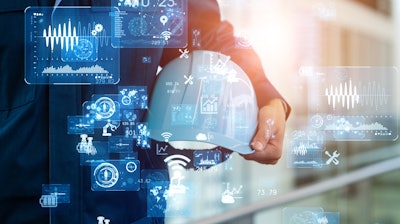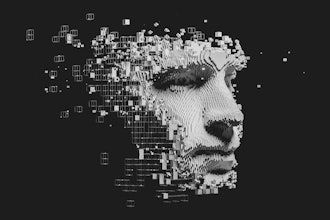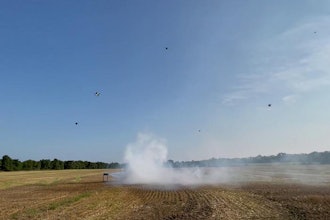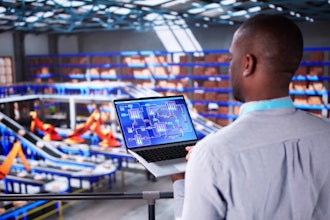
In recent years Artificial Intelligence (AI) has emerged as a formidable force driving innovation across industries. AI's omnipresence is undeniable, from finance to healthcare and logistics to entertainment. A prominent area where AI is making significant inroads is in the sphere of workplace safety.
The old guard of workplace safety—comprising manual checks, reactive responses, and intuition—has been reimagined. Now, with the infusion of AI, we see the rise of predictive, proactive, and data-driven approaches that significantly diminish accidents.
Among the plethora of AI tools making waves, Vision AI has elegantly taken the lead, favored for its adaptability, scalability, and growing adoption. Rather than a fleeting trend, Vision AI represents a foundational shift towards elevating workplace safety standards and mitigating risks.
Understanding the Need
Let's have a look at some insights that indicate why we need to change our approach when it comes to workplace safety.
Each year, the reports on workplace accidents are distressing. Thousands of incidents, some minor, others severe, or even fatal, are recorded. An in-depth look at these statistics provides a sobering picture of the current safety landscape and stresses the immense potential AI holds in altering this scenario for the better.
The International Labor Organization (ILO) estimates there are around 340 million cases of occupational accidents and 160 million cases of work-related illnesses in the world annually. ILO also estimates that 2.3 million workers die from occupational accidents or work-related diseases each year; this corresponds to over 6,000 deaths daily.
The financial implications of inadequate workplace safety are substantial, not only in terms of compensation and medical costs following accidents, but also in potential regulatory fines, increased insurance premiums, and the less tangible but equally significant costs related to downtime, reduced productivity, and damage to the company's reputation.
According to the U.S. National Safety Council, the total cost of work injuries in 2021 was $167 billion. Data from reports also indicate that the global expenditure on workplace accidents and illnesses amounts to about three to four percent of the world's total yearly GDP.
The Need for a Proactive Approach
Many workplaces continue to rely on reactive safety protocols, addressing risks and hazards only after they've occurred. However, forward-thinking organizations recognize the value of shifting from such reactive methodologies to proactive strategies. With the power of Artificial Intelligence (AI) and its predictive analytics capabilities, businesses can preemptively identify and mitigate risks.
Vision AI combines real-time visual input with advanced deep learning algorithms and predictive analytics to provide real-time capabilities, such as:
- Real-time Monitoring. Vision AI employs sophisticated image recognition techniques that can continuously monitor work environments. By detecting anomalies or deviations from standard operating procedures, the system can instantly flag any safety breaches or unusual activities, prompting immediate action. This level of ongoing surveillance ensures that issues are caught and addressed in real-time rather than after an incident has occurred.
- Risk Prediction. Vision AI can use deep learning algorithms to analyze extensive datasets – from past incidents to real-time feeds. By doing this, it can predict potential hazards based on patterns and trends. This forecasting capability ensures that preventive measures can be implemented before a risk escalates, ensuring timely intervention.
- Data-driven Decisions and Key Insights. Safety is a dynamic entity, constantly evolving due to variations in equipment, environmental conditions, personnel behavior, and other influential factors. Vision AI delves deep into extensive data sources, from historical accident reports to real-time environmental sensor outputs. Vision AI stands out because of its ability to interpret and correlate vast datasets, ensuring that safety measures are both contemporary and pertinent.
Continuous Learning
Vision AI adapts and refines its algorithms based on new data and experiences. This continuous learning ensures that the system's accuracy and predictive capabilities are maintained and consistently enhanced over time. Beyond just immediate hazard identification, Vision AI serves as a comprehensive analytical tool. By continuously monitoring workplace environments, it can pinpoint accident-prone hotspots, discern patterns that might escape human observation, and provide actionable insights into the root causes of recurring safety lapses.
This wealth of data is invaluable for decision-makers. By analyzing these trends, organizations can proactively implement safety measures tailored to their specific challenges, ensuring a safer work environment for all.
Vision AI, at its core, is a fusion of computer vision and machine learning technologies. It's a sophisticated system designed to process, analyze, and interpret visual data from the world, much in the same way human eyes and brains function together. Some of the technical processes include:
- Image Acquisition. Everything begins with the collection of visual data, typically using cameras or other optical devices.
- Pre-processing. Once the image data is captured, it undergoes a series of pre-processing steps. These can include noise reduction, image enhancement, and resolution scaling to ensure the data is of optimum quality for analysis.
- Feature Extraction. The processed images are then subjected to feature extraction. This involves identifying and isolating specific attributes or patterns in the image that are of interest.
- Machine Learning & Deep Learning Integration. The extracted features are then fed into machine learning algorithms or deep learning neural networks. These systems have been trained on vast datasets, enabling them to recognize patterns, classify objects, or even predict outcomes based on visual data.
- Post-Processing & Analysis. Once the algorithms process the data, the results undergo post-processing to refine the outputs. This can involve removing any false positives, collating results, or converting the outputs into actionable insights.
- Action & Feedback Loop. Depending on the application, Vision AI can trigger specific actions based on its analysis – such as sending an alert for a safety breach. Additionally, any new data or results can be fed back into the system, facilitating continuous learning and model refinement.
Having grasped the intricacies of its functioning, it's essential to understand Vision AI's real-world applications, especially in the realm of workplace safety.
- PPE Detection. One of the fundamental applications of Vision AI in workplace safety is the detection of PPE. Whether it's helmets in construction sites, safety goggles in chemical labs, or face masks in healthcare settings.
- Slip and Fall Detection. Vision AI systems can be trained to recognize patterns and motions indicative of a person slipping or falling. Upon detecting such an event, instant alerts can be triggered, ensuring rapid response and possibly preventing severe injuries.
- Smoke and Fire Detection. While traditional smoke detectors rely on airborne particles, Vision AI can visually identify the onset of smoke or flames even before traditional systems sound an alarm.
- Non-compliance Detection. Vision AI can monitor activities and identify instances where procedures are not being followed, such as unauthorized personnel entering restricted areas or equipment being operated inappropriately.
- Suspicious Activity Detection. Security is an integral component of workplace safety. Vision AI can be configured to recognize behaviors or patterns deemed suspicious. This can range from unauthorized access attempts to the tampering of equipment, ensuring that potential security breaches are identified and addressed promptly.
As we journey further into the digital age, integrating technologies like Vision AI in the workplace becomes advantageous and essential. Its remarkable capabilities to detect, predict, and respond to potential hazards are revolutionizing safety standards. But beyond the technological marvels, at the heart of Vision AI is a simple promise: a safer work environment for everyone. By minimizing accidents and maximizing proactive interventions, Vision AI is saving costs for businesses and, more importantly, protecting the invaluable lives of employees.




















